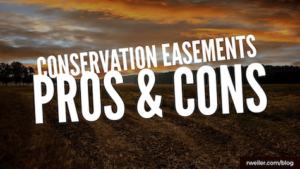The IRS has been attacking abusive tax shelters for years. The IRS wrapped up its annual “Dirty Dozen” list of tax-related scams and dodges Friday. Again they include abusive syndicated conservation easements, and abusive micro captive insurance arrangements.
Abusive syndicated conservation easements
 Qualified conservation contributions as defined under Sec. 170(h) can yield legitimate charitable deductions, including properly established easements and other real property interests.
Qualified conservation contributions as defined under Sec. 170(h) can yield legitimate charitable deductions, including properly established easements and other real property interests.
However, the IRS maintains an ongoing campaign to identify and deny improper tax benefits claimed from arrangements that fail the tests of law and regulation.
Generally, these abusive arrangements are syndicated, using partnership arrangements lacking a legitimate business purpose. Often, their values are artificially inflated.
The IRS said in the last five years it has examined “many hundreds” of syndicated conservation easement arrangements involving tens of billions of dollars in improper deductions claimed and has litigated hundreds of them.
Protecting Natural Resources while Connecting People to the Land
 A conservation easement is a voluntary legal agreement between a landowner and a qualified not-for-profit conservation organization or government agency that permanently preserves land.
A conservation easement is a voluntary legal agreement between a landowner and a qualified not-for-profit conservation organization or government agency that permanently preserves land.
The conservation easement restricts the use and development of a property in a manner that protects specific conservation resources (e.g. wetlands, forests, scenic views, agricultural fields).
Conservation easements are flexible documents and can be written to fit the needs of the landowner while still conserving important resources on the property.
They are legal documents that are recorded with the County Clerk and become part of the property’s title.
This agreement is held between a landowner and a government agency or a land trust, with the landowner maintaining ownership.
The conservation easement can either be sold or donated, resulting in a variety of tax benefits for the landowner.
The easement is recorded with the property’s deed and transfers to all future landowners.
Every Conservation Easement is Unique
The terms of each conservation easement are tailored to the specific characteristics per property. Most terms are designed to meet multiple conservation objectives.
For example, an easement intended to conserve a scenic area will have different restrictions than an easement designed to protect an endangered species habitat.
Some prohibit all future development, while others allow for limited new construction or other improvements. Most easements allow traditional uses of the land such as forestry, agriculture or recreation to continue as long as the conservation goals of the property are being met.

